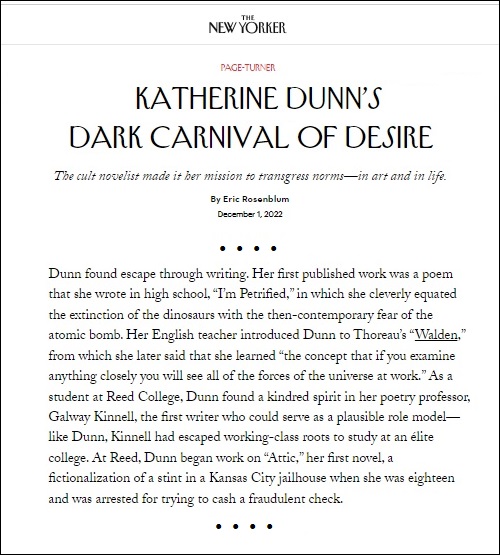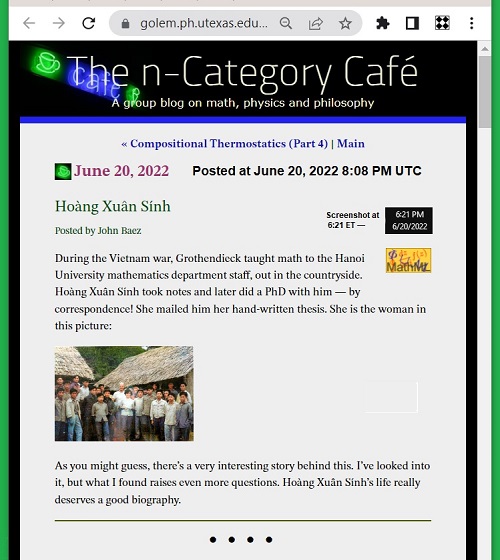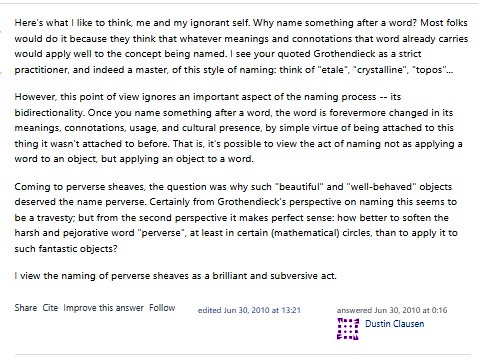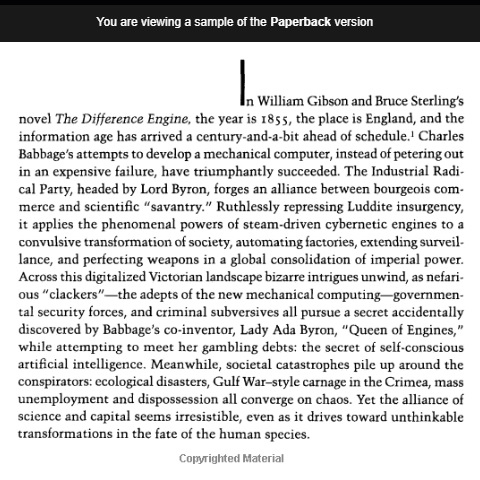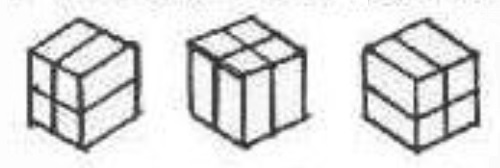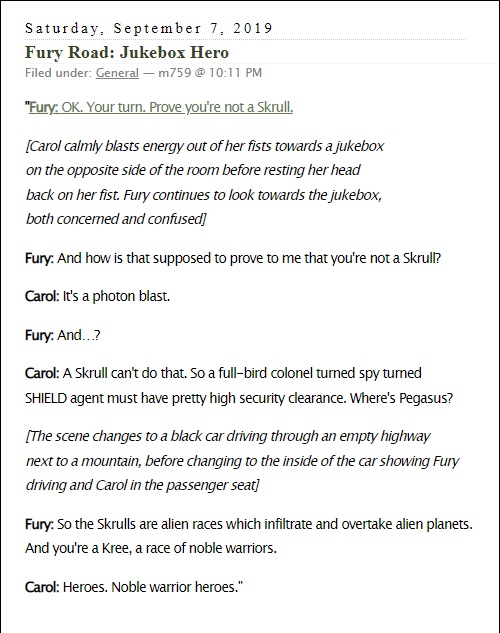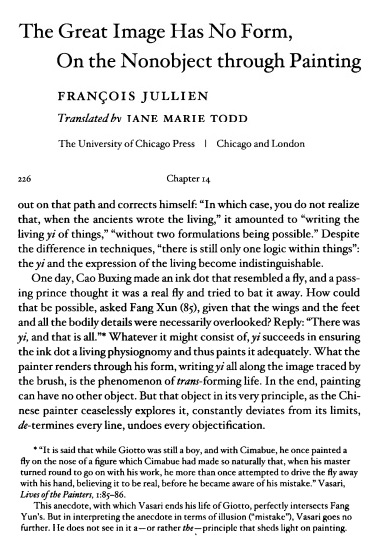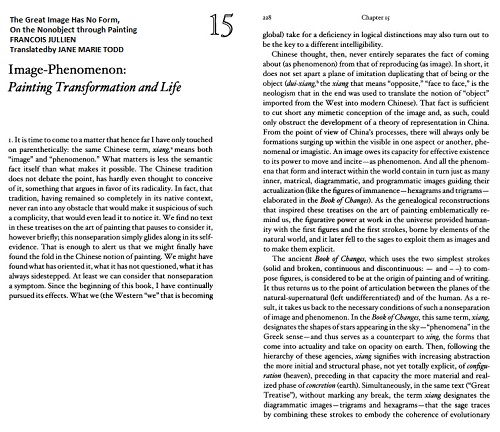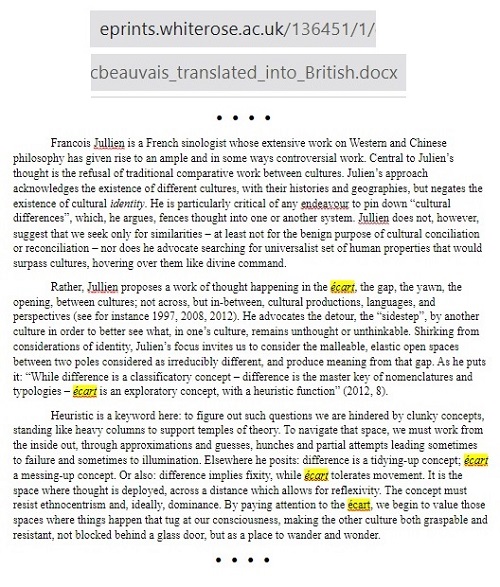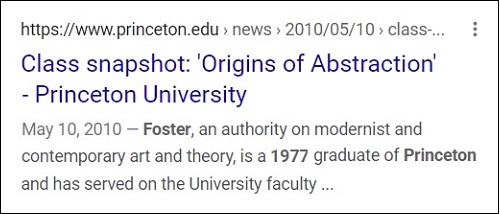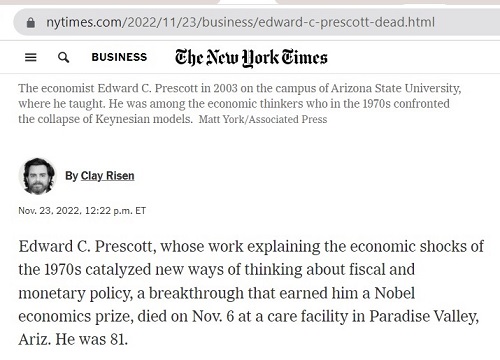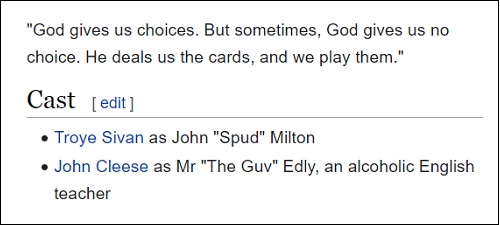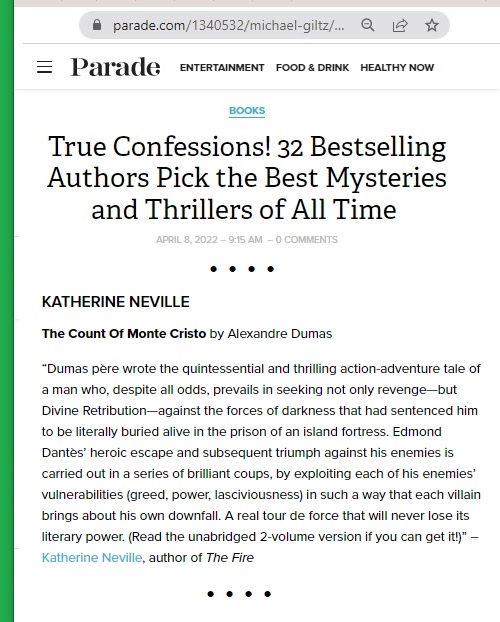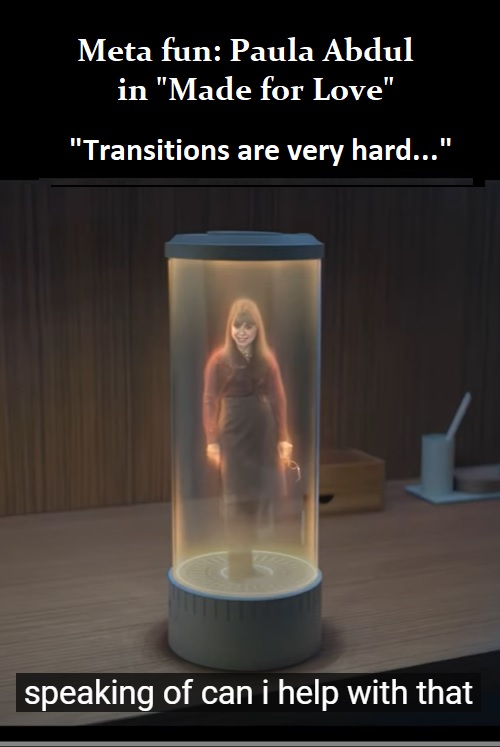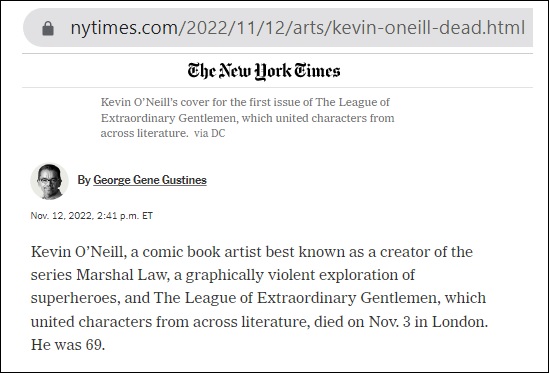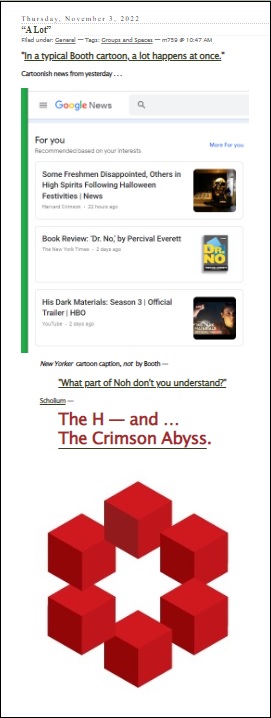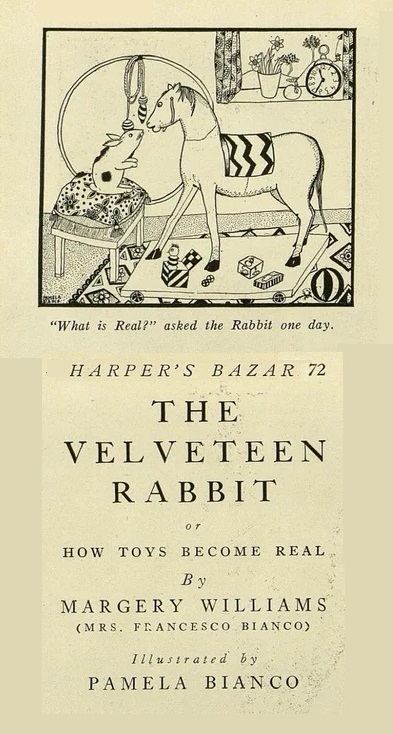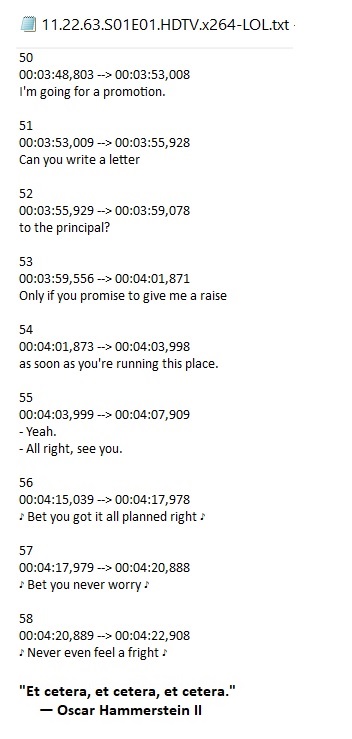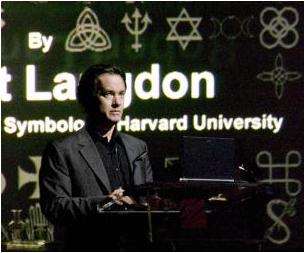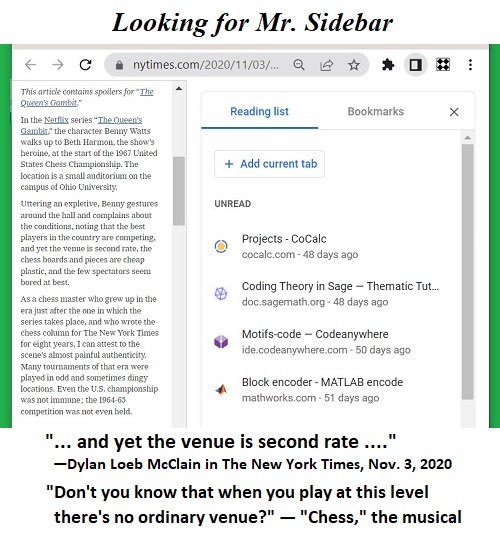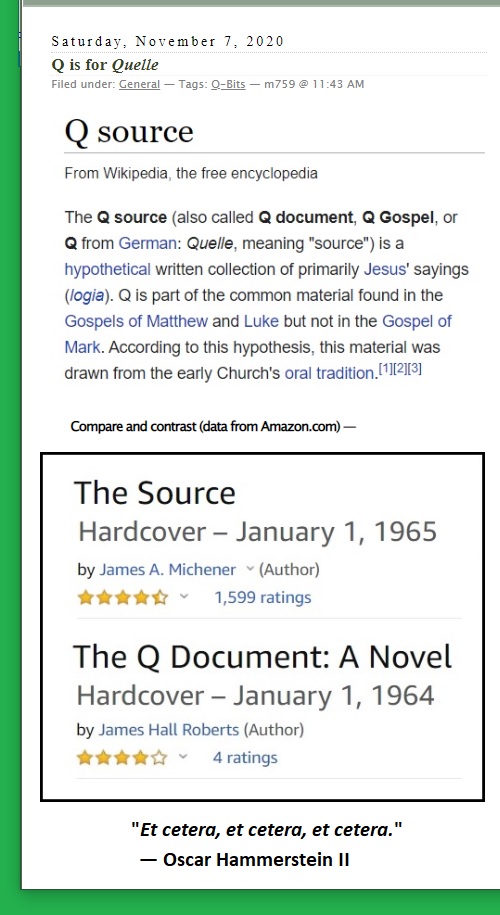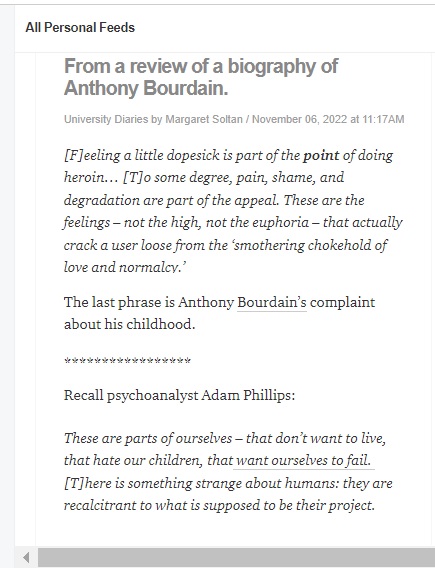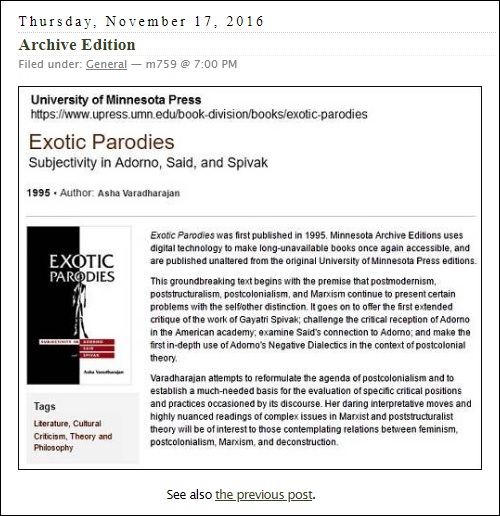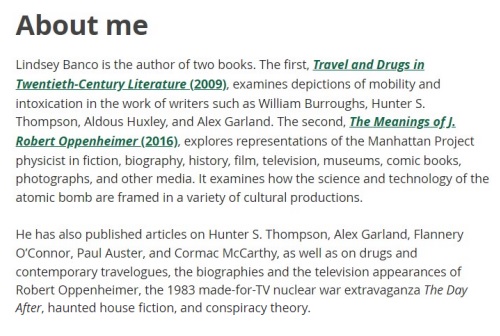Saturday, December 3, 2022
Cello at Nevermore
The Primes of LCM:
2 and 3.
(See The Rimshot Muse
and Interality Again.)
This post was suggested in part by
a thoughtful obituary yesterday for
the author of The Number Devil .
I prefer Numberland .
Friday, December 2, 2022
Lesson Plan for Nevermore Academy
Eric Rosenblum in The New Yorker yesterday:
"Her English teacher introduced Dunn to Thoreau’s 'Walden,'
from which she later said that she learned 'the concept that
if you examine anything closely you will see all of the forces
of the universe at work.' As a student at Reed College, Dunn
found a kindred spirit in her poetry professor, Galway Kinnell,
the first writer who could serve as a plausible role model—
like Dunn, Kinnell had escaped working-class roots to study at
an élite college."
See also other Log24 posts tagged Kinnell .
Richard J. Turyn, 1930-2022
See also Turyn in this journal.
A Log24 post from the above date —
October 24, 2022 — suggests
a related cinematic image:
"Please wait as your operating system is initiated."
Words and Objects
The above remarks from 2010 were suggested by
a weblog post by Peter Woit yesterday and by tonight's
Season 2 Teaser of "The Peripheral."


Thursday, December 1, 2022
Compare and Contrast
From Log24 last summer . . .
From Log24 yesterday:
Catchup for Blockheads . . . Da Capo
Related material: Posts tagged Metadata.
Harvard CSI
Wednesday, November 30, 2022
Now at Harvard: The Link Chase
From https://dash.harvard.edu/ a straightforward search now leads to . . .

Clicking on the above "Square Model" link leads to a summary page
with a "citable link" to itself . . .
https://nrs.harvard.edu/URN-3:HUL.INSTREPOS:37373777 :

— and then, clicking on the summary page's
"View/Open The square model of PG(3,2). (329.1Kb),"
you will see a two-page PDF . . .

— and finally, scrolling down on that PDF, you will come to . . .
 .
.
Or you can just Google Cullinane square model .
Three Representations
Tuesday, November 29, 2022
Area 15 Revisited: The In-Folding
"All manner of thing shall be well
When the tongues of flame are in-folded
Into the crowned knot of fire
And the fire and the rose are one."
— T.S. Eliot, “Little Gidding” (1942)
For seekers of a "crazy Christmas knot" —
The commercial logo below may be viewed as
three in-folded Y-shaped orange forked tongues.

See also this journal on the above opening date — July 23, 2021:
Cover illustration:
Spies returning from the land of
Canaan with a cluster of grapes.
Colored woodcut from
Biblia Sacra Germanica ,
Nuremberg, Anton Koberger, 1483.
Victoria and Albert Museum, London.
"What happens in Canaan, stays in Canaan."
Mere Synchronology
The date — January 9, 2010 — of the Guardian book review
in the previous post was noted here by a top 40 music list
from that same date in an earlier year.
Update of 4:07 AM ET the same morning:
Fans of Cormac McCarthy's recent adventures in unreality
might enjoy interpreting the time — 3:25 AM ET — of this post
as the date 3/25, and comparing the logos, both revisited
and new, in a Log24 post from 3/25 . . .
Helen Mirren with plastic Gankyil .
. . . with the logo of a venue whose motto is
"Reality is not enough."
Monday, November 28, 2022
“At Home with the Hammersteins”
The title is a phrase from a 2010 Guardian book review.
The book under review was by one Hans Magnus Enzensberger,
who reportedly died at 93 on Nov. 24 in Munich.
Also on Nov. 24 —
Groups, Spaces, and Ripoffs
"Rubik's Cube, and the simpler [2x2x2] Super Cube, represent
one form of mathematical and physical reality."
— Solomon W. Golomb, "Rubik's Cube and Quarks:
Twists on the eight corner cells of Rubik's Cube
provide a model for many aspects of quark behavior,"
American Scientist , Vol. 70, No. 3 (May-June 1982), pp. 257-259
From the last (Nov. 14, 2022) of the Log24 posts now tagged Groups and Spaces —
From the first (June 21, 2010) of the Log24 posts now tagged Groups and Spaces —
L’écart, l’entre and so forth
See as well . . .
"But let us return to the concepts of the divide [écart ]
and interspace [l'entre ], which figure prominently in my work…."
Saturday, November 26, 2022
Da Capo: The Iceman Goeth
The name "Hickey" in last night's post suggested the phrase
"pipe dream" and a search for the opening date of
"The Iceman Cometh" — which was October 9, 1946.
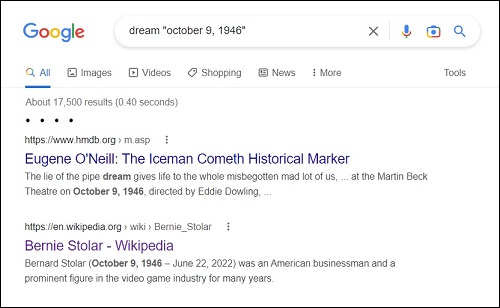
That date, it happens, was the birth date of a video game
executive whose passing was noted here . . .
Friday, November 25, 2022
“Open the pod bay doors, Hal.”
"Both Hal and the students were great interlocutors
with lots of ideas and differing perspectives."
—Leah Dickerman, MoMA, May 10, 2010, at
https://www.princeton.edu/news/2010/05/10/
class-snapshot-origins-abstraction
Later . . .
See as well Desargues + Galois.
Thursday, November 24, 2022
The Drum Machine
"A struggling music producer sells his soul to a 1970s drum machine."
— Summary of a short film by Kevin Ignatius, "Hook Man."
The music producer pawns his current drum device
and acquires a demonic 1970s machine.
Artistic symbolism —
The 16-pad device at left may be viewed by enthusiasts of ekphrasis
as a Galois tesseract, and the machine at right as the voice of
Hal Foster, an art theorist who graduated from Princeton in 1977.
For an example of Foster's prose style, see
the current London Review of Books.
Wednesday, November 23, 2022
Crary Art: A Long Dark Trail*


* "The Long Dark Trail" is the title of a recent film
directed by a later resident of 505 Market Street.
Prescott Street: “Second-Rate Venue?” Discuss.
In memory of an economist who reportedly died on Nov. 6 —
See also a Log24 post from Prescott's reported death date,
and a search in this journal for Prescott Street.
Ho vs. Ho!

A literary note for Ho, from this journal on October 27, 2008 —

A day earlier — October 26, 2008 — was the date of a very
informative, but deeply tasteless, introduction to . . .

That introduction need not be quoted here.
Tuesday, November 22, 2022
“Jaeger (Jäger)”
" The term jaeger is German for 'hunter.' "
— Thomas Tull, producer, at 0:42 / 4:10 in
Pacific Rim – "Jaegers: Mech Warriors" Featurette
Related language notes —
"Drift" in Pacific Rim and "Haptic Drift" in The Peripheral .
See also …
"The story begins with the the doctor asking Trexler
if he has any bizarre thoughts."
— Description of a classic E. B. White story,
"The Second Tree from the Corner."
… and a particular second tree from a particular corner:
For “Triangle of Sadness” Fans
From a Charlbi Dean film —
See as well Season 1 of the HBO series "White Lotus" —
Christmas Creep
Picture Story
"Apart from its great antiquity the picture-story mode of presentation
favored by the unconscious has the appeal of its simple utility.
A picture can be recalled in its entirety whereas an essay cannot."
— Cormac McCarthy, essay on language and the unconscious,
April 17, 2017, quoted in a post of November 9, 2022.


See also Soifer in this journal and . . .

Related philosophical remarks —
Related entertainment —
Monday, November 21, 2022
Deep Pool
"Nietzsche in Basel studied the deep pool
Of these discolorations, mastering
The moving and the moving of their forms
In the much-mottled motion of blank time."
— Wallace Stevens, "Description Without Place"
Also in Basel, a mathematics professor contemplated the Lo Shu —
Calvinist Anomalies
Last night's 1:40 AM ET Windows lockscreen was Chateau d'If,
a fortress featured in the 1846 novel The Count of Monte Cristo :

"The isolated location and dangerous offshore currents
of the Château d'If made it an ideal escape-proof prison,
very much like the island of Alcatraz in California
in more recent times. Its use as a dumping ground for
political and religious detainees soon made it one of the
most feared and notorious jails in France. Over 3,500
Huguenots (French Calvinists/identifying Christians)
were sent to Château d'If, as was Gaston Crémieux,
a leader of the Paris Commune, who was shot there in 1871."
Speaking of Calvinists . . . See Marilynne Robinson on anomalies.
Sunday, November 20, 2022
Illustration
Saturday, November 19, 2022
Software Exploits: The Quick and Dirty Operating System
Friday, November 18, 2022
A Little Theatre for Aaron Sorkin
Datura Date
There was no Log24 post for the above Jacky Klein date,
July 6, 2016, but the posts of that month contain a flashback
to an earlier July 6 —
See as well . . .
… and some Log24 posts from the above Dec. 1, 2014, date
now tagged Red Dawn.
Requiem for a Producer
The New York Times this morning:
"Michael Butler, Who Brought ‘Hair’ to Broadway, Dies at 95"
See as well . . .
R. Pierson Eaton at a Warren Co. School Board meeting
in the late 1960s — " Quis custodiet ipsos custodes? "
Bullshit Studies: Cohen on Kiefer
" La Ribaute is hard to classify. It is now controlled by
a foundation for which Kiefer chose the name 'Eschaton,'
meaning the final event in the divine plan, or the end of
the world. 'You can say it’s the end of the beginning,'
Kiefer said. 'Eschaton means that something comes after.'
So why, I asked, did he pick this name? 'Because it’s the
beginning.' "
I prefer T. S. Eliot on ends and beginnings, as well as
R. A. Wilson on the Eschaton.
From a Stub World
Ay Que Bonito
See the above title and Barbara Johnson in this journal.
Johnson taught at Harvard for 25 years, starting in 1983.
See also Harvard in the previous post, The Crimson Riddle.
The Crimson Riddle
Wednesday's original New York Times headline reporting a Harvard death —
"Henry Rosovsky, Who Redefined
Harvard to Its Core, Dies at 95"
Yesterday that headline was rewritten —
That revision suggests another . . .
An Old Riddle Made New:
"What's black and white and crimson all over?"
Thursday, November 17, 2022
Wednesday, November 16, 2022
“Here am I, your special island” — Song lyric
Tuesday, November 15, 2022
Poe Street
And now… the musical!

Update at 12:30 AM ET on Wednesday, November 16, 2022 . . .
Some background:
"Die Philosophie ist ein Kampf gegen die Verhexung
unsres Verstandes durch die Mittel unserer Sprache."
— Wittgenstein, Philosophical Investigations (1953), Section 109
A Chateau Marmont story related to a death that reportedly*
occurred on August 18, 2020 —
https://nypost.com/2020/08/28/
cathy-smith-who-injected-john-belushi-with-fatal-overdose-dies-at-73/
This journal on August 18, 2020 —
Mr. Kampf Perceives
* Other sources, such as The New York Times , give August 16 as the
date of death. That date in this journal also deals with art and reality.
Poetry’s Bones
For some simple rhymes, see the previous post.
Not so simple: Poetry's Bones.
Models of Narrating
Monday, November 14, 2022
Primitive Design Theory
The previous post discussed the phrase "plot structure."
A different approach —

Textbook art from 1974 —

See as well a more interesting book I enjoyed reading in 1974.
Plot Structure
From Peter J. Cameron's weblog today —
"It happens sometimes that researchers working in different fields
study the same thing, give it different names, and don’t realise that
there is further work on the subject somewhere else…."
Cameron's example of a theorem connecting work on
the same thing in different fields —
"Theorem A partition Δ is equitable for a graph Γ if and only if
the projection matrix onto the subspace of functions constant
on parts of Δ commutes with the adjacency matrix of Γ."
A phrase from Cameron's remarks today —
"Thus we have to consider 'plot structure'…."
For more remarks on different fields and plot structure , see
"Quantum Tesseract Theorem" in this weblog.
Sunday, November 13, 2022
The Two-by-Two Song
See posts now tagged A Song Is Born.
(The song is not Oh, Susannah. See related remarks.)
Saturday, November 12, 2022
“Dirac’s Hidden Geometry”
See also other Log24 posts tagged Dirac and Geometry.
Inside a White Cube
For the late Brian O'Doherty, from posts now tagged "Pless Birthday 2022" —
This post was suggested by an obituary of O'Doherty and by
"The Life and Work of Vera Stepen Pless" in
Notices of the American Mathematical Society , December 2022.
Abyssus Abyssum Invocat
See "Internet Abyss" in this journal.
1961 Revisited
Route 66 Revisited
See Hell to Heaven (Log24, December 14, 2003).
Friday, November 11, 2022
Shatner’s Lament
In memory of Gallagher and of Jeff Cook —
“Excuse me, Miss, I didn’t order this,” Shatner says.
“It looks like something from the abyss."

The above menu was suggested by Tamer Nawar,
a philosophy professor mentioned here on Sept. 22.
“Location, Location, Location”
Thursday, November 10, 2022
“What are we supposed to learn?”
From a search in this journal for "Hexagram 61" —
“‘Oracle, why did you write
The Grasshopper Lies Heavy?
What are we supposed to learn?'”
— Philip K. Dick
“She began throwing the coins.“
Click to enlarge.
Philosophical Inquiry
For Students of the Forked Tongue



The above 1975 book by Robert Greer Cohn, Modes of Art, is
Volume I of a planned three-volume work.
The passage below is from a review of Cohn's Vol. II, Ways of Art —
|
Franklin, Ursula (1987) "Book Review: A Critical Work II. . . . . Those not familiar with the author's epistemology should begin with Appendix A of Ways of Art , a schematic demonstration of his tetrapolar-polypolar-dialectic, especially as it concerns the development of the French novel within the European tradition. But this dialectic, which has antecedents in Kierkegaard, Mallarme and Joyce, underlies all art, because: "this dimensional pulsation, or tetrapolar (and polypolar) higher vibrancy is, in short, the stuff of life: life is vibrant in this more complex way as well as in the more bipolar sense" (7). Cohn shows that "far out enough" the male or linear and the female or circular, the male vertical and the female horizontal dimensions "tend to merge as in relativity theory" (19). Ways of Art shows us the way through a historical becoming of art in its complex dialectic in which the metonymic (horizontal) axis constantly interrelates with the metaphoric (vertical). "Life is the mother, art the father" (vii); hence Cohn's quarrel with most contemporary Feminism, which is pronounced throughout the volume. Firmly grounded in its author's tetra-polypolar epistemology, this beautiful book becomes, however, at no point dryly abstract; it is the mature work of a true humanist who stands in clear and open opposition to the dehumanizing trend of "the quasi-scientific reductionism and abstract gimmickry of a great deal of current academic literary study, bellwethered by the structuralists, post-structuralists, and deconstructionists" (vi). Abundant footnotes constitute a substantial part of Ways of Art , on occasion developing insights almost into essays demonstrating crucial points along the general flow of the tradition from "Obscure Beginnings;' the opening chapter, to our "Contemporaries;' the last. Cohn reminds us that "In the Beginning was the Word;' for the Judaeo-Christian tradition at least, which his study fervently embraces; thus, for example, in Appendix 0 on "The Dance of the Sexes;' he censures "those who live by slogans, camps, and peer-opinion, the countless little bastard cults which characterize an era which has massively veered away from our free and beautiful Greco-Judaeo-Christian tradition" (332). Cohn traces man's way and that of his myths and rituals culminating in his art from that beginning along the lines of Freud, Neumann and Cassirer, and many others, always demonstrating the underlying polypolar dialectical rhythm. Thus in "From Barbarism to Young Culture;' we follow the Celts to Druidic ritual, Hebrew beginnings to the Psalms, Dionysian ritual to Greek tragedy, and thence to the beginnings of French dramatic literature originating in the Quem quaeritis sequence of the medieval Mass. Along the way arises artistic symbolism, for Cohn synonymous with "effective poetry;' to finally "ripen in France as never before" (99). Table I (134) graphs this development from the twelfth to the late nineteenth and early twentieth centuries. The author traces the rise of the artistic vocation from its antecedents in the double function of bard and priest, with the figure of Ronsard at the crossroads of that dying institution and the nascent concept of personal glory. "The Enlightenment Vocation" is exemplified in Montaigne, who humanizes the French cultural elite and points the way to French classicism and, farther down the road, after the moral collapse with the outgoing reign of Louis XIV, toward the Age of Reason. Clearly the most significant figure of the French Enlightenment for all of Western civilization is Rousseau, and Cohn beautifully shows us why this is so. Subsequently, "the nineteenth-century stage of the writer's journey will lead, starting from the crossroads of Rousseau, primarily in these two directions: the imperialistic and visionary prose of Balzac, the equally ambitious poetry of Mallarme", brothers under the skin" (199). And these two paths will then be reconciled in Proust's monumental A la recherche du temps perdu . . . . . |
Wednesday, November 9, 2022
A Picture Story for Cormac
"Apart from its great antiquity the picture-story mode of presentation
favored by the unconscious has the appeal of its simple utility.
A picture can be recalled in its entirety whereas an essay cannot."
— Cormac McCarthy, essay on language and the unconscious,
April 17, 2017
Is the Devil in the Details?
Tuesday, November 8, 2022
Trophy

A more cheerful moment, from June 19, 2019:
Crystal Ocean wins the Prince of Wales trophy —

Related entertainment from this journal on June 19, 2019 —
"Our die was cast."
Story Dice
From The Queen's Gambit by Walter Tevis —

|
The Saturday afternoon movie in the library was The Robe . It had Victor Mature in it and was spiritual; all the staff was there, sitting attentive in a special row of chairs at the back, near the shuddering projector. Beth kept her eyes nearly shut during the first half-hour; they were red and sore. She had not slept at all on Thursday night and had dozed off for only an hour or so Friday. Her stomach was knotted, and there was the vinegar taste in her throat. She slouched in her folding chair with her hand in her skirt pocket, feeling the screwdriver she had put there in the morning. Walking into the boys’ woodworking shop after breakfast, she took it from a bench. No one saw her do it. Now she squeezed it in her hand until her fingers hurt, took a deep breath, stood up and edged her way to the door. Mr. Fergussen was sitting there, proctoring. “Bathroom,” Beth whispered. Mr. Fergussen nodded, his eyes on Victor Mature, bare-chested in the arena. She walked purposively down the narrow hallway, over the wavy places in the faded linoleum, past the girls’ room and down to the Multi-Purpose Room, with its Christian Endeavour magazines and Reader’s Digest Condensed Books and, against the far wall, the padlocked window that said PHARMACY. |
A related Log24 post —

"Discuss." — Coffee Talk
Monday, November 7, 2022
Prescott Street Revisited: The Boys in the Kitchen
Or: MDT-48 Meets COMP360.
‘It doesn’t have a street-name and that’s because, as yet,
it doesn’t have any street profile – which is incidentally
the way we want it to stay. The boys in the kitchen are
keeping it low-key and anonymous. They’re calling it MDT-48.’
The boys in the kitchen?
— Glynn, Alan. Limitless: A Novel (p. 40).
Picador. Kindle Edition.
(Originally published by Little, Brown
in Great Britain in 2001 as The Dark Fields .)
From Log24 on Nov. 29, 2020 —
CNN story from All Souls' Day 2022 —
“This drug can be extracted from magic mushrooms,
but that is not the way our compound is generated.
It’s synthesized in a purely chemical process
to produce a crystalline form,” said Goodwin, who is
the chief medical officer of COMPASS Pathways,
the company that manufactures COMP360 and
conducted the study."
See as well "To Think That It Happened on Prescott Street"
and related posts.
Further Adventures in Harvard Iconology…
Sunday, November 6, 2022
The ’64-’65 Gambit
"… the 1964-65 competition was not even held."
— Dylan Loeb McClain in The New York Times , Nov. 3, 2020.
But in other games . . .
"The metaphor for metamorphosis no keys unlock."
— Steven H. Cullinane, November Seventh, 1986
The Paris Review Opening
“Goldengrove Unleaving”
Saturday, November 5, 2022
Under the Bridge, Over the Dam … Whatever.
Bridge


Dam
April 11, 2020, was the dies natalis ,
in the Catholic sense,
of John Horton Conway.
Whatever.
Life, Death, and Geometry
See as well this journal on July 17, 2019 —
Posts now tagged Life-Death-Geometry.
Friday, November 4, 2022
Dark Fields Lyric
Heard Thursday evening in the dark fields of the republic —
"Rebel rebel, you've torn your dress
Rebel rebel, your face is a mess
Rebel rebel, how could they know?
Hot tramp, I love you so!"

Addendum — 10:30 AM ET on 5 Nov. 2022 —

Addendum — 5:45 PM ET on 4 Nov. 2022 —
The Triangle Club of Sadness
Annals of Theology: The Coordinatization Being
Thursday, November 3, 2022
Dazzled or Baffled?
"If you can't dazzle 'em with brilliance,
baffle 'em with bullshit." — Folk saying
Brilliance —
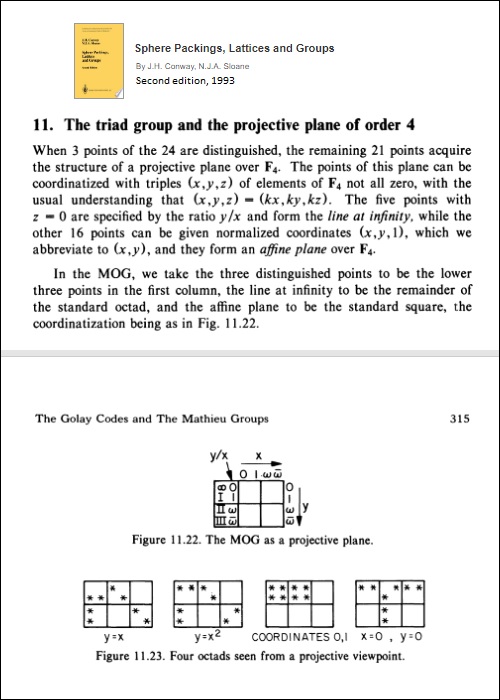
Bullshit —
A New York Times book review on All Saints' Day 2002 —
"Like every villain, Sill has an origin story. This one involves
the murder of his father and the assassination of Martin Luther King Jr.
As vengeance, Sill resolves to destroy America using a weapon
called a 'complex projective plane orbiter.' What does that mean?
Don’t worry about it."

Related reading: The Aloha Grid .
Linear Transformations for Scientists, or . . .
"Rotate, Flip, and Stretch, Baby!"
"One way to evaluate an artist is to observe the quantity and quality
of misinterpretation his work begets. By this measure Everett ranks
very highly. 'Damn it, I don’t understand it, but I love it,' mutters one
of the characters, regarding Sill’s weapon of nothingness. Same.
Kitu has a colleague named Eigen Vector, which refers to …
something having to do with linear transformations?"
— Book review by Molly Young in The New York Times
on All Hallows' Day 2022
See as well Bik in The New Yorker on June 23, 2021.
“A Lot”
"In a typical Booth cartoon, a lot happens at once."
Cartoonish news from yesterday . . .

New Yorker cartoon caption, not by Booth —
"What part of Noh don't you understand?"
Scholium —
The H — and …

Colorful Appropriation*
(Title suggested by Google News today
and by a Percival Everett short story.}
Wednesday, November 2, 2022
The Plot
"Principal photography has begun in Croatia
on the action thriller Canary Black , starring Kate Beckinsale
and Rupert Friend (Anatomy of a Scandal )."
"The film’s plot follows a top CIA operative, Avery Graves
(Beckinsale)…. Cut off from her team, she turns to her
underworld contacts to survive and help locate the
coveted intelligence that the kidnappers want."
[Croatia , underworld , and coveted intelligence links added.}
Tuesday, November 1, 2022
Grimes Rhymes
Disney Overtones

From other Log24 posts tagged "The Phantom Date" —
“… her mouth is red and large, with Disney overtones. But it is her eyes,
a pale green of surprising intensity, that hold me.”
— Violet Henderson in Vogue , 30 August 2017
From “Goethe on All Souls’ Day”
The above title is that of a Log24 post on St. Cecilia's Day in 2017
that quoted some earlier All Souls' Day remarks from Berlin.
From that post —

Exercise: Explain why the lead article in the November issue of
Notices of the American Mathematical Society misquotes Weyl
and gives the misleading impression that the example above,
the eightfold cube , might be part of the mathematical pursuit
known as geometric group theory .

Background: Earlier instances here of the phrase "geometric group theory."
Monday, October 31, 2022
Folklore vs. Mathematics
Sunday, October 30, 2022
Rethinking October 18th
The New York Times today reported a death on October 18th,
the Feast of St. Luke.

See also Luke in this journal. Some will prefer Cool Hand Luke to
the alleged gospel author.
Saturday, October 29, 2022
Quarterly
Boolean Halloween
From Log24 posts tagged Boole vs. Galois —
Kauffman‘s fixation on the work of Spencer-Brown is perhaps in part
due to Kauffman’s familiarity with Boolean algebra and his ignorance of
Galois geometry. See other posts now tagged Boole vs. Galois.
See also “A Four-Color Epic” (April 16, 2020).
Friday, October 28, 2022
“If there’s a rock ’n’ roll heaven…”
See also "hell of a band" in this journal.
The Lexeme “Deploy”
From an Oct. 26 elegy in the form of a book review …
From a search in this journal for "deploy" —

Related art —
As for "Miracles and Visionaries," I prefer the literature associated
with the 1974 Miracle Octad Generator of R. T. Curtis.
Thursday, October 27, 2022
The Zombie Doctrine
A reference to neoliberalism in today's news suggests a look at
a British journalist's remarks from April 2016 . . .
"Like communism, neoliberalism is
the God that failed. But the zombie doctrine
staggers on . . . ."
Wednesday, October 26, 2022
The Big Rock
Big Rock
"I'm going to hit this problem
with a big rock."
– Mathematical saying, quoted here
on St. Peter's Day 2008

"I see a red door and I want it painted black" — The Rolling Stones
The Hunt for Galois October
"… Évariste was born on October 25, 1811."
— Eric Temple Bell, Men of Mathematics
Related material —
But seriously . . .
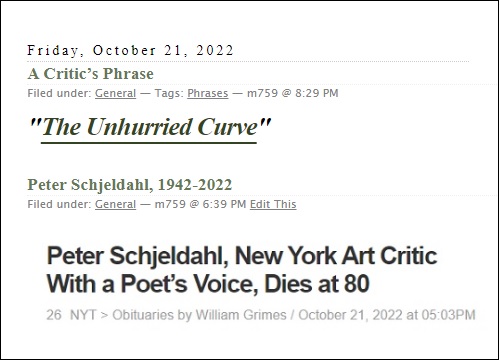
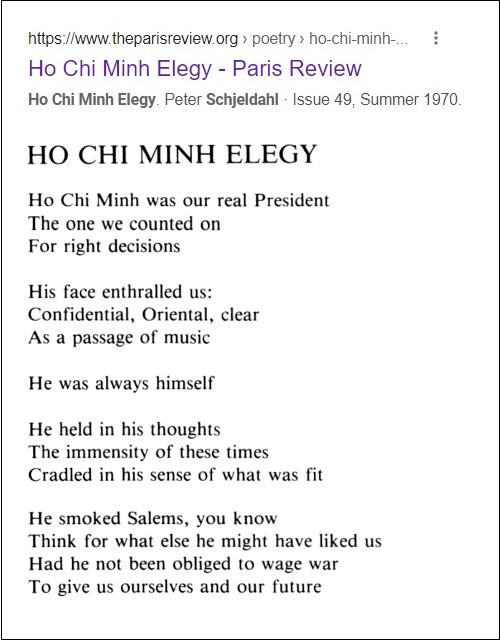
Tuesday, October 25, 2022
Monday, October 24, 2022
Turning Eight: Double Twist
Sunday, October 23, 2022
Mathematical Intelligencer News
For Pekonen in this journal, see
From the Finland Station (25 April 2022).
See as well an obituary from Finland.
Saturday, October 22, 2022
The Concrete of Destiny

Also on October 3rd . . . The Concrete of Destiny .

